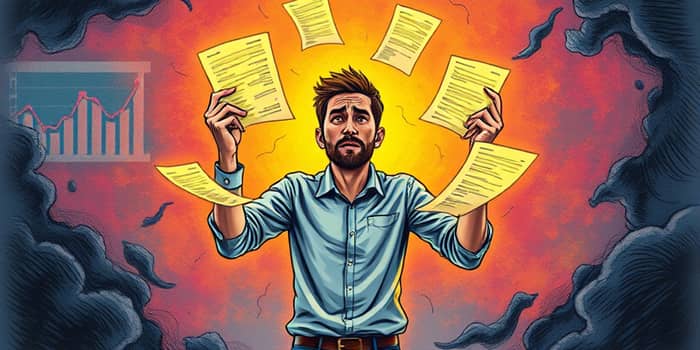
Loan stacking may appear at first glance as a clever short-term solution for urgent funds, but beneath the surface lies a powerful indicator of deeper financial distress. Understanding this practice is crucial for borrowers and lenders alike, as it signals imminent challenges and potential long-term harm.
Loan stacking is characterized by the rapid acquisition of multiple loans from different lenders within a condensed timeframe. Unlike managing a steady portfolio of credit accounts, stacking is defined by the intent to access as much funding as quickly and often without full disclosure.
Actors affected include:
While not inherently illegal, loan stacking often violates lender agreements and leads to hefty penalties or default acceleration if uncovered.
Individuals and businesses resort to stacking for a variety of reasons. These often stem from genuine need rather than malicious intent.
Unfortunately, the initial relief provided by new funds can quickly be overshadowed by compounding repayment commitments.
The allure of immediate cash can give way to a harsh reality of overlapping obligations and escalating expenses.
Overlapping repayment obligations frequently demand weekly or even daily installments, creating a squeeze on available cash. Borrowers find themselves juggling multiple deadlines, heightening anxiety and stress.
As debts multiply, many enter a cycle of borrowing to pay existing loans, deepening their vulnerability and risking a downward spiral toward insolvency.
The table above highlights the stark contrast in payment-to-income ratios between typical borrowers and those engaging in stacking. Doubling of PTI ratios signals serious financial pressure.
Additional consequences include:
Research underscores the correlation between delinquency and financial distress. A multivariate regression analysis found that delinquency on mortgages and credit cards directly correlates with heightened stress levels. Mortgage delinquency, in particular, has been shown to be roughly three times more stressful than student loan delinquency.
Subprime and near-prime borrowers without stacked obligations maintain a PTI ratio around 20–25%. However, those juggling three or more short-term loans report average ratios near 50%, illuminating a dramatic rise in debt service burden.
As loan stacking risks become clearer, lenders have adopted measures to protect their interests and maintain portfolio health.
By integrating these tools, lenders can better assess true borrower exposure and reduce default rates, thereby stabilizing their risk profiles.
Consider a local retailer facing a sudden drop in sales due to supply chain disruptions. In a bid to maintain inventory, the owner secured three separate short-term business loans from different fintech platforms, each promising quick approval and minimal documentation.
Within weeks, weekly repayments for principal and interest consumed over half of the store’s daily revenue. Unable to meet all payment schedules, the retailer defaulted on one loan, triggering cross-default clauses that demanded immediate settlement of the remaining debts.
This scenario exemplifies how short-term fixes yield long-term harm, pushing businesses toward insolvency rather than offering sustainable relief.
Loan stacking shares similarities with the overextension seen in Buy Now, Pay Later (BNPL) services. Consumers using multiple BNPL plans often experience:
Both phenomena underscore a common theme: easy access to multiple credit lines can mask underlying financial fragility until obligations become unmanageable.
Loan stacking should not be viewed merely as a tactical financial maneuver but as a red flag signaling deeper distress. For borrowers, recognizing this pattern early can prompt a reassessment of spending habits, exploration of alternative resources, and engagement with credit counseling services.
For lenders, diligent monitoring and transparent communication about debt obligations can mitigate losses and foster healthier borrower relationships. Ultimately, awareness and proactive management of loan stacking serve as critical steps toward sustainable financial well-being.
By understanding loan stacking as an early-warning signal, stakeholders can address root causes of stress rather than offering temporary fixes that compound problems over time.
References













